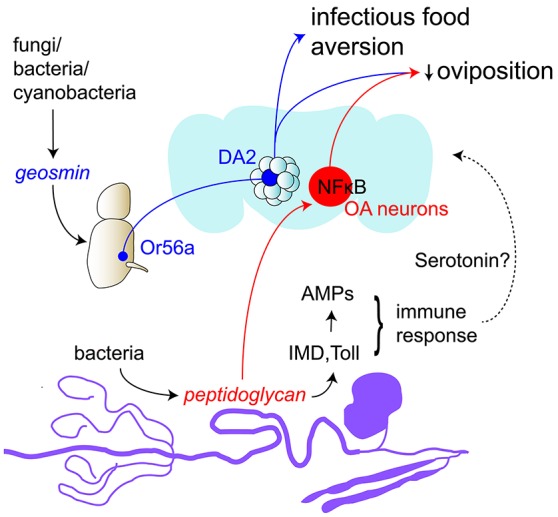Figure 4.

Neuromodulation in sickness and behavioral immunity (blue) Drosophila can avoid feeding or laying eggs on infected food by detecting geosmin produced by some fungi, bacteria and cyanobacteria. Geosmin activates ORNs expressing OR56a that project to the DA2 glomerulus in the antennal lobe. They form synaptic contacts with projection neurons specific for this pathway. (red) In infected flies, octopaminergic neurons (OA neurons) can detect peptidoglycan, a component of the bacterial cell wall, and induce a decrease in egg-laying in infected flies. (black) Peptidoglycan also activates the innate immune response via the IMD and Toll pathways that lead to the production of antimicrobial peptides (AMPs). Studies from C. elegans and honeybees suggest that serotonin could form the link between the malaise caused by the ingestion of a pathogen or a toxin and the learned avoidance of the infected food.
